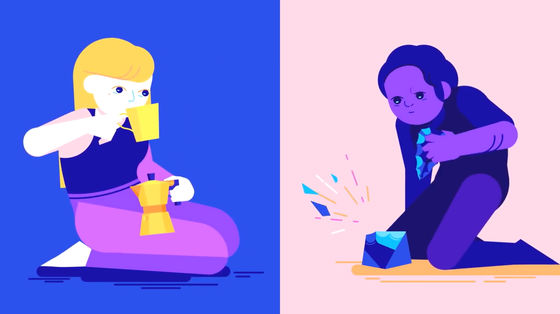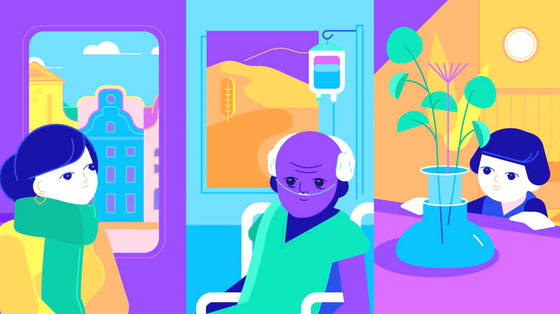Why are humans attracted to 'beautiful things'?

by
Since ancient times, 'beautiful things' have attracted many people. While beautiful things make the human mind happy, there are many cases where conflicts have arisen to obtain beautiful things owned by others. A movie explaining why humans are drawn to such beautiful things is released on YouTube.
Why Beautiful Things Make us Happy – Beauty Explained
There are many things in this world that humans find 'beautiful.' A magnificent natural landscape ...

face

Magnificent building

Or just the reflection of the sun's rays on an empty bottle can make it beautiful for humans.

If you dare to define beauty, it is a particular color, shape, or proportion. Only when those combinations fit into a pattern do humans perceive it as beautiful.

Humans have had the experience of feeling something beautiful for millions of years.

Even the earliest tools invented by ancient humans have a beautiful symmetrical shape. The ancients who took the time to create beautiful tools would not have known why they felt beautiful.

The concept of beauty has changed over the years, but ...

It is said that there is beauty that does not change over time.


Curiously, humans share an essential part of beauty.

Many of the patterns that people find beautiful are born of natural objects.

For example, some fractal patterns are based on natural objects such as snail shells, flowers, waves and clouds.

Correctly grasping these naturally occurring patterns was an essential ability for ancient people to survive. People read various things from the natural shape, such as what kind of cloud shape it will rain from now on, how much wave it is okay to swim in the sea, whether this flower shape is edible or not. increase.

Factors such as symmetry are also important in nature. Being an object means 'its existence is normal'. For example, tree trunks, leaves, and flowers grow basically symmetrically ...

It can be inferred that the deer, whose horns have a clean symmetry, probably have nutritious and healthy meat.

Asymmetric wheat, on the other hand, may possess dangerous poisons when eaten.

Symmetry is a very common pattern in both animals and plants, and the human brain is sensitive to symmetry. If something is not symmetrical, it may mean danger, so humans need to be vigilant about it.

Being safe stimulates the human reward system and makes people happy.

Therefore, human aesthetics are said to have arisen from patterns such as safety and nutrition, which were obtained as a result of observing nature. However, human beings have developed further from there and have built a strong sense of beauty ...

Even if most of the brain does not work properly, it is possible that only the aesthetic sense remains.

In one experiment, a patient with Alzheimer's disease was asked to arrange the pictures in the order in which they were considered to be beautiful.

When instructed to arrange the pictures again two weeks later, the patient arranged the pictures in the same order as two weeks ago, even though he had forgotten to see the pictures before. This experiment suggests that the standard of beauty remains the same, even for people with Alzheimer's disease who forget things.

It has been shown that there is a kind of greatest common divisor when it comes to the beauty that humans perceive.

In

Many people rated the paintings by Mondrian and Pollock, which were controlled based on fractal patterns, as more beautiful.

In other experiments, the artist made a distinction between abstract paintings drawn with fractal and symmetry in mind and paintings appropriately drawn by animals and children, but the subjects were still drawn by controlling various patterns. I heard that I was able to distinguish the paintings.

Humans no longer have to survive desperately in nature ...

It is possible to live in an artificial and safe environment.

As humans spread across the globe, towns and cities are becoming larger one after another ...

In the process, humans have often created buildings that ignore beauty, with an emphasis on functionality and cost.

As a result, monotonous buildings such as concrete buildings, subway stations, and rugged buildings have flooded the world ...

By nature, humans do not like monotonous things. Looking at complex and beautiful buildings and looking at various places makes humans feel happy.

When the subject wearing the skin sensor is shown the front of a monotonous building with a large area, he feels bored and uncomfortable.

While monotonous buildings increase human heart rate and stress ...

Surrounded by beautiful things, the environment makes the human body healthy and improves cognitive function and mood.

The human body and mind are strongly influenced by what we see, and seeing beautiful things greatly contributes to human well-being.

In a 2017 experiment, placing visually stunning works of art and interiors in the hospital lounge area increased patient satisfaction.

Another study examined how the patient's condition changed between the old and ugly ward and the new and sophisticated ward.

They found that patients staying in the new ward took less painkillers than patients in the old ward, and the average number of days to discharge was two days earlier.

A beautiful environment has a positive effect on people's bodies.

Beautiful things are also directly related to human well-being.

In a study of factors that influence the well-being of adults, in addition to 'good relationships with family' and 'health', 'the beauty of the city in which they live' is favorable to individual happiness. It turned out to be influential.

The beauty of a city has a stronger impact on happiness than the cleanliness and safety of the city.

For millions of years, humans have analyzed visual information to assess their surroundings.

By understanding what you feel is beautiful and incorporating it into your life properly ...

Humans can feel happiness even in a modern society full of monotonous artifacts.

Related Posts:
in Video, Posted by log1h_ik







